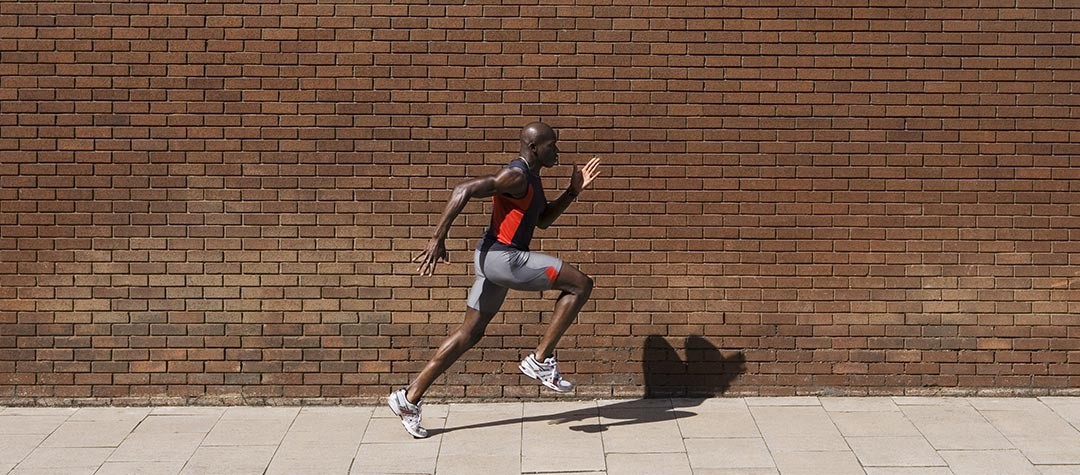It's important to have a think about your technique to make your running as smooth and efficient as possible. Here is your guide on perfecting your running technique.
Although we all know the basic ‘how to’ of running (left foot, right foot…) it does help to know a few basic pointers about good technique. Consider the following running technique tips with suggestions on how to focus on different parts of the body:
Eyes
Do not run with your eyes looking down at your feet. Your eyes should be focused approximately 10 to 15m (33 to 50ft) in front of you to achieve a good running technique.
Face
Try to keep your face relaxed. Do not clench your jaw as when the jaw is clenched, neural signals are sent along the spinal cord, causing the body to tense up.
Head
The average head weighs around 7 to 10 lbs (3 to 4.5kg), so it is important where you support it to avoid undue strain. Don’t drop the head forwards – but equally, don’t pull it back. It is also important not to allow the head to jut forward on your neck, much like we do when sat at a computer or when watching TV.
Shoulders
Shoulders should be relaxed when running. To do this, avoid clenching the fist. Also, strengthening the upper and mid back muscles and stretching the chest can help reduce shoulder tightness.
Arms
The arms should act as pistons to propel you forward when you are perfecting your running technique. Elbows should be bent, somewhere close to 90 degrees. Drive the arms forward; they will naturally come back on their own. Moving your arms faster makes your legs move faster, so use more arm power when you’re putting in more effort, rather than if you are casually jogging.
Hands
Hands should not be clenched, but neither should they be left dangling loosely. The best advice to get it right is to imagine you are holding a crisp between each thumb and forefinger; tight enough to keep hold of it but not so tight that you crush it.
Back
Your torso should be perpendicular to the ground, back kept straight and your navel pulled in to your spine. Do not arch back or lean forward, which can throw your alignment off or restrict your breathing.
Hips
When running, imagine you are growing taller with every step. This will help you avoid slumping onto the pelvis, a position which compromises your core stability .
Knees
Aim for a reasonable but not excessive knee lift with each stride but don’t worry about reaching your heels to your bottom (unless you are sprinting). This will help you achieve a better running technique.
Ankles
Don’t grip with the front of your ankles, particularly on hills. Many of us have a tendency to run with rigid ankles, which doesn’t help with shock dissipation or a smooth stride.
Feet
Land on the mid-foot and roll smoothly through to the forefoot. Don’t deliberately ‘flick’ off the toes as your foot leaves the ground. Relax your toes.
Keep all this advice in mind when running. A good habit to get into is to perform a body scan every ten minutes so that you keep your running technique spot on. Ignoring your running form can lead to niggles, which in turn can lead to full blown injuries .
To carry out a body scan when running, ask yourself the following questions:
-
Can you feel any tightness in your jaw or shoulders?
-
Are you clenching your fists, or holding your ankles rigid?
-
Do you feel half an inch shorter than when you set out?
Good running technique: breathing
Some running experts recommend breathing through your nose, while others suggest the most efficient way of breathing in and out is through the mouth, not the nose. The bottom line is do what feels best for you. It can help to have a steady rhythm, with a set breathing pattern dictated by your foot strikes.















